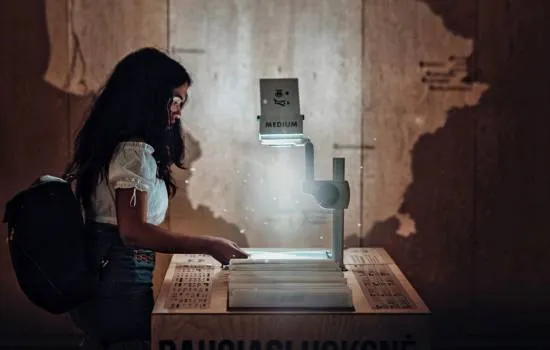Advertisements
Materials Needed for Your Homemade Projector
Now, let's list the materials you will need to transform your cellular in a projector.
The process is simple and many of the elements can be found at home or in building supply stores:
Advertisements
- Cellular: The protagonist of this adventure, who will be the source of the image.
- Lens: A magnifying glass or magnifying lens (this component is essential to redirect and magnify the image).
- Cardboard box: To create the internal environment that helps concentrate the light.
- Adhesive tape and scissors: To securely fix components.
- Aluminum foil or black paint: To line the box and prevent unwanted reflections, improving image quality.
- Improvised stand or tripod: To position the cellular in a stable manner.
These are the basic elements you'll need. Remember that, although the process is simple, the precision in the positioning of the components can make a difference in the quality of your work. smart TV projector home.
Step by Step: Assembling Your DIY Projector
Let's get started! Here's a step-by-step tutorial to transform your cellular in a projector:
Advertisements
- Prepare the Box:
Take a sturdy cardboard box and cut one side to create a larger opening where the image will be projected. Line the inside with aluminum foil or paint it black to prevent reflections.
Psst… This tip is essential to achieve a sharper image, almost like that of a smart TV projector professional. - Position the Lens:
Drill a hole in the side of the box, the size of the lens you'll be using. Place the lens in this hole so that it's secure. This will be the "window" through which the light will exit. cellular and will be transformed into the projected image.
Tip: If the lens isn't properly aligned, the image may be distorted. Try several positions to find the best angle. - Place the Cell Phone:
Enter the cellular inside the box, so that the screen is facing the lens. You may need to adjust the distance between the cellular and the lens to achieve the ideal focus. This process may require some testing – and it's okay if it takes a little time to get it right!
Recommendation: Check out our article “How to Adjust Focus on DIY Projectors” for more detailed tips. - Test the Image:
Turn on the cellular and choose a video or presentation to test the projector. Adjust the lens position and angle until the projected image looks sharp and clear.
Note: Please note that the brightness may not be as strong as that of a smart TV projector commercial, but with the right settings, the result may surprise you.
Every step of the process is an opportunity to learn a little more about how the technology works. And, let's face it, this hands-on experience can be very rewarding!
Care and Maintenance of your DIY Projector
Once you've set up and tested your home projector, it's important to know how to care for and maintain it to keep it working properly. Here are some essential tips:
- Lens Cleaning:
The lens is one of the most important parts of your projector. Clean it periodically with a soft cloth to prevent dust and fingerprints from compromising projection quality. - Materials Review:
Check the case structure and the mounting hardware on the phone and lens. If you notice any components becoming loose or worn, make the necessary repairs to maintain the device's stability. - Regular Adjustments:
Over time, the ideal phone position may vary slightly. Each time you use the projector, test the focus and image sharpness, adjusting as needed to ensure the best viewing experience.

Conclusion: A Technological Journey with Your Cell Phone
In short, transform your cellular Using a projector may seem, at first glance, like an unusual project, but as we've seen, it offers numerous learning and fun opportunities. Personally, during an afternoon of experiments, I was amazed by the potential of something so simple. This experience proves that, with a little patience and creativity, we can reinvent the use of our devices and leverage technology in more practical and economical ways.
The idea of a smart TV projector Homemade not only breaks barriers in terms of cost, but also brings us closer to a deeper understanding of how light and lenses can work together to create stunning images. While the results may not be comparable to those of professional equipment, the satisfaction of having done it yourself is priceless.
